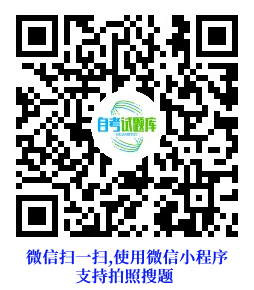注意:此页面搜索的是所有试题
题目内容
(人文英语4)
选择题
When Bill de Blasio ran for New York City mayor last year, he promised to end a controversial (有争议的), citywide cell-phone ban(禁令)in public schools, which is not equally enforced in all schools. Now, under his leadership, the city is preparing to end the ban. It will be replaced by a policy that allows phones inside schools but tells students to keep them packed away during class.
Many schools have a rule about enforcing the ban that says, “If we don.t see it, we don.t know about it.” That means teachers are OK with students bringing in cell phones, as long as they stay out of sight and inside bags and pockets.
But at the 88 city schools with metal detectors, die ban has been strictly enforced. The detectors were installed to keep weapon out of schools,but the scanners(扫描器)can also detect cell phones. So students at these schools must leave their phones at home or pay someone to store it for them.
The ban was put into place in 2007 under mayor Michael Bloomberg. Ending the ban will also likely end an industry that has sprung up near dozens of the schools that enforce the ban. Workers in vans(厢式货车)that resemble food tracks store teens. cell phones and Other devices for a dollar a day,
Critics of the ban say cell phones are important safety devices for kids during an emergency. They also say that enforcement of the ban is uneven and discriminatory. Where the ban is enforced, it puts a disadvantage on students who can.t afford to pay to store their phones.
Before putting an official end to the cell-phone ban, city education officials are working on creating a new policy. It will include rules about not using the phones during class or to cheat on tests.
1. Which of the following is the main idea of the passage?
回答
A. New York City will give financial aid to poor students.
B. New York City plans to restrict cell phone use in libraries.
C. New York City will soon end a ban on cell phones in schools.
2. Students pay
回答
a day to leave their cell phones in a van parked near their school.
A. a dollar
B. two dollars
C. five dollars
3. Metal detectors were installed in 88 city schools, mainly to keep
回答
out of schools.
A. cell phones
B. weapons
C. drugs
4. The word discriminatory in Paragraph 5 probably means
回答
.
A. necessary
B. tough
C. unfair
5. According to the passage, which of the following statements is TRUE?
回答
A. After the cell-phone ban is ended, students can use their phones during class.
B. The cell-phone ban is equally enforced in all public schools.
C. A phone-storage industry has appeared outside the 88 metal-detector campuses.

When Bill de Blasio ran for New York City mayor last year, he promised to end a controversial (有争议的), citywide cell-phone ban(禁令)in public schools, which is not equally enforced in all schools. Now, under his leadership, the city is preparing to end the ban. It will be replaced by a policy that allows phones inside schools but tells students to keep them packed away during class.
Many schools have a rule about enforcing the ban that says, “If we don.t see it, we don.t know about it.” That means teachers are OK with students bringing in cell phones, as long as they stay out of sight and inside bags and pockets.
But at the 88 city schools with metal detectors, die ban has been strictly enforced. The detectors were installed to keep weapon out of schools,but the scanners(扫描器)can also detect cell phones. So students at these schools must leave their phones at home or pay someone to store it for them.
The ban was put into place in 2007 under mayor Michael Bloomberg. Ending the ban will also likely end an industry that has sprung up near dozens of the schools that enforce the ban. Workers in vans(厢式货车)that resemble food tracks store teens. cell phones and Other devices for a dollar a day,
Critics of the ban say cell phones are important safety devices for kids during an emergency. They also say that enforcement of the ban is uneven and discriminatory. Where the ban is enforced, it puts a disadvantage on students who can.t afford to pay to store their phones.
Before putting an official end to the cell-phone ban, city education officials are working on creating a new policy. It will include rules about not using the phones during class or to cheat on tests.
1. Which of the following is the main idea of the passage?
回答
A. New York City will give financial aid to poor students.
B. New York City plans to restrict cell phone use in libraries.
C. New York City will soon end a ban on cell phones in schools.
2. Students pay
回答
a day to leave their cell phones in a van parked near their school.
A. a dollar
B. two dollars
C. five dollars
3. Metal detectors were installed in 88 city schools, mainly to keep
回答
out of schools.
A. cell phones
B. weapons
C. drugs
4. The word discriminatory in Paragraph 5 probably means
回答
.
A. necessary
B. tough
C. unfair
5. According to the passage, which of the following statements is TRUE?
回答
A. After the cell-phone ban is ended, students can use their phones during class.
B. The cell-phone ban is equally enforced in all public schools.
C. A phone-storage industry has appeared outside the 88 metal-detector campuses.
参考答案
